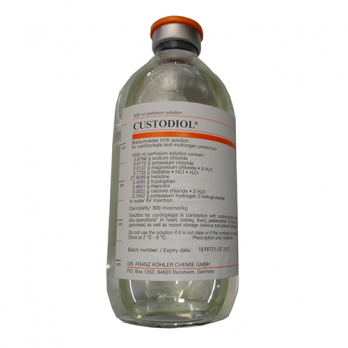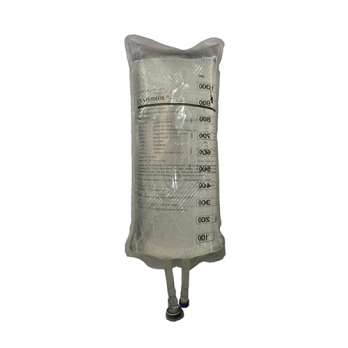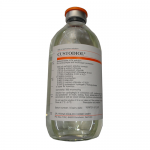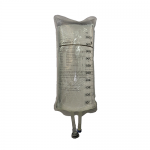Composition
1.000 ml Custodiol® contains:
0.8766 g Sodium chloride = 15.0 mmol/l
0.6710 g Potassium chloride = 9.0 mmol/l
0.1842 g Potassium hydrogen 2-ketoglutarate = 1.0 mmol/l
0.8132 g Magnesium chloride · 6 H2O = 4.0 mmol/l
3.7733 g Histidine · HCI · H2O = 18.0 mmol/l
27.9289 g Histidine = 180.0 mmol/l
0.4085 g Tryptophan = 2.0 mmol/l
5.4651 g Mannitol = 30.0 mmol/l
0.0022 g Calcium chloride · 2 H2O = 0.015 mmol/l
in sterile Water for injection
Anion: Cl- 50 mval
Physical Properties
pH 7.02 – 7.20 at 25ºC (77° F) [pH 7.4 – 7.45 at 4ºC (39.2° F)] Osmolality: 310 mosmol/kg
Indications for Use
Custodiol® HTK Solution is indicated for perfusion and flushing of donor kidneys, liver, pancreas and heart prior to removal from the donor or immediately after removal from the donor. The solution is left in the organ vasculature during hypothermic storage and transportation (not for continuous perfusion) to the recipient.
Pharmocology
CUSTODIOL® prolongs ischemia tolerance in organs requiring protection mainly by two mechanisms of action:
- The electrolyte composition of CUSTODIOL® prevents the triggering of energy-consuming activation processes. In this way the energy requirements of the organs are reduced to the lowest possible level.
- Anaerobic energy production is limited by the increasing inhibition of glycolysis due to decrease of pH brought about by the accumulation of lactic acid. The buffer histidine/histidine HCl retards the fall in pH in the tissues during organ ischemia. In this way the proportion of anaerobic glycolytic energy production is increased.Potassium hydrogen 2-oxopentandioate is a substrate for aerobic energy production. Tryptophan has been claimed to have a membrane-protective action.Mannitol is considered to prevent the emergence of cell edema. The overall osmolality of the solution is slightly below the normal osmolality of the plasma and the intracellular space









